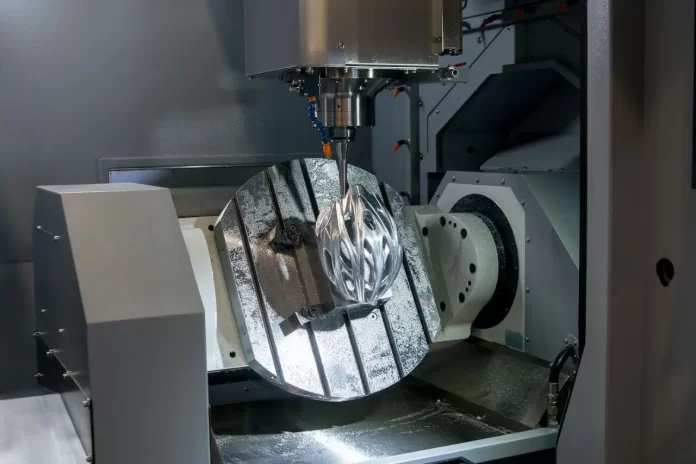Around the world, CNC machines produce components for virtually every market. They work with a wide variety of durable materials, including plastics, metals, aluminum, wood, and more. Computer Numerical Control is the official name, however nowadays most people just call it “CNC.” Exactly what is a CNC machine, then?
There are three main parts that make up any automated motion control machine: the command function, the drive/motion system, and the feedback system. CNC machining refers to the use of a computer numerically controlled machine tool to alter the shape of a solid material part.
Digital instructions created in CAM or CAD programs like SolidWorks or MasterCAM provide the basis for CNC operation. The CNC machine’s controller can read the G-code that is generated by the program.Whereas traditional equipment relied on levers and gears to move tools and workpieces, modern automated cutting processes are significantly faster and more precise.
Modern computer numerically controlled machines can carry and use a wide variety of cutting tools. How complicated of a workpiece a CNC can manufacture depends on the number of planes of movement (axes) it has and the number and types of tools it can automatically access during the machining process. Mori Seiki Machines for sale is recommended for these kinds of Jobs.
History Of CNC Machines
Table of Contents
Known as the “father of the CNC machine,” John T. Parsons (1913-2007) of Parsons Corporation in Traverse City, Michigan is widely credited with developing the numerical control. John Parsons has been given the title “father of the second industrial revolution” for his contributions to the field. He realized early on that the future of manufacturing lay in linking machines to computers since he needed to make complicated helicopter blades.
These days, nearly every industry makes use of CNC-made components. We have a greater standard of life, more reliable national defense, and lower prices for consumer goods all thanks to computer numerical control (CNC) machinery. This article will discuss the history of CNC machines, the many CNC machine types, CNC machine programming, and standard procedures used in CNC machine shops.
Computers Meet Machines
In 1946, a “computer” was a punch card-based calculator. John Parsons of Parsons Corporation managed to persuade Sikorsky Helicopter to use his company despite the fact that they had only ever manufactured a single propeller. In the end, he came up with a punch card computer system for determining rotor blade positions.
Then he had the Cincinnati milling machine’s operators set the wheels at the desired locations. He ran a competition to determine what to call this new method, and the winner received $50 for coming up with “Numerical Control,” or “NC.”
He patented the idea of integrating a computer into industrial machinery in 1958. He submitted his patent application three months before MIT finished developing the idea he had initiated. His ideas were implemented in the original equipment developed by MIT, and his licensee (Bendix) sub-licensed them to companies including IBM, Fujitsu, and GE. The NC idea took some time to spread.
Mr. Parsons claims that the notion was sold by computer specialists rather than manufacturing experts. But, by the early 1970s, the United States Army had built and leased NC computers to various manufacturers, therefore spreading their use. Together with the development of the computer, the CNC controller advanced, further automating and enhancing the efficiency of machining and other manufacturing operations.
Learn CNC Operation Techniques
To harness the full potential of a CNC machine, machinists need training in both programming and metalworking. Manual lathes are typically used as a first introduction to metal cutting for students in technical trade schools and apprenticeship programs.
The ability to think in three dimensions is essential for the machinist. Complex parts can now be made with greater ease than ever before thanks to modern software that allows for their shape to be created virtually, after which tool paths can be recommended.







